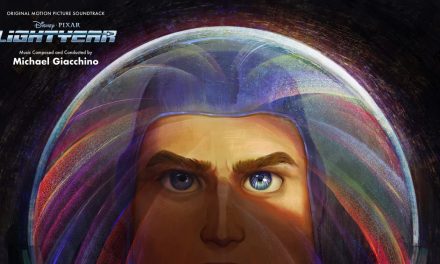If Black Sabbath are the grandfathers of heavy metal, then Judas Priest is the father that outdid them in almost every way. If you ask me to show someone what heavy metal is, I won’t hand them a copy of Paranoid or Master of Reality. I’ll instead hand them a copy of Screaming For Vengeance, British Steel, or Painkiller. That’s what Judas Priest means to the heavy metal community. Without them we wouldn’t have a classic look for heavy metal with studs and leather. They started off much different with their first album Rocka Rolla though.
Thin Lizzy and Wishbone Ash might have been the first to use the twin-guitar attack, but Judas Priest was the one that solidified it in the heavy metal sphere. K.K. Downing and Glenn Tipton were and still are probably the best twin guitarists for any band. It was set to be the 50th anniversary celebration for Judas Priest this year. To make up for those shows being postponed, it’s high time for Judas Priest-A-Thon. The brother to the album by album reviews, Iron Maiden-A-Thon and the cousin to our series of Rush album reviews. You’re going to be getting a Judas Priest album review, every business day, until we’re all through. Let’s start with the first Judas Priest album, Rocka Rolla.
Early Beginnings For The Priest
Judas Priest started off far different than their current image. A product of the late sixties and sort of stoner, hippie rock, they were founded in West Bromwich in 1969. The original members of the band were: Al Atkins (vocals), Brian Stapenhill (bass), John Perry (guitar), and John Partridge (drums). Sadly, John Perry was killed in an auto accident shortly after joining the band. His replacement was Ernest Chataway, who played in a band called Earth. Earth would go on to become Black Sabbath. That version of the band wouldn’t last very long, disbanding in 1970. Al Atkins would start a new band called Freight. K.K. Downing, Ian Hill, and John Ellis joined Atkins. They took on the name from Atkins previous band, Judas Priest.
Named after the Bob Dylan song “The Ballad of Frankie Lee and Judas Priest”, they were still a skeleton of the band we would love. Al Atkins would be forced to leave the band after financial troubles. He had a family to support and the band wasn’t making money on the road. The search was on for a new lead singer. They turned to bassist Ian Hill’s girlfriend. No, she wasn’t picked to be their new lead singer. Her brother, Rob Halford was tapped to join the band. Yes, folks, Rob Halford’s sister was dating Ian Hill. That’s the “sliding doors” moment for Judas Priest.
The band signed on for a recording contract with Gull Records. The record company suggested that the band add a fifth member. They would add guitarist Glenn Tipton. This would form the “core four” of Judas Priest that would continue until 1992. It was high time for the band to record something substantial though. They went into the studio in the summer of 1974.
Recording of Rocka Rolla
The record was produced by Rodger Bain. He was the producer on the first three Black Sabbath albums and Budgie’s first two albums. According to the band, he dominated the recording sessions and made questionable decisions on the mixing and cut of the album. The recordings were all done live in the studio. So instead of cutting the parts together, they all were doing their parts together. Glenn Tipton didn’t contribute much to the writing of the album as he had just joined the band. He did contribute to the title track and “Run of the Mill”.
Most of the songs were played live before the band recorded anything and some was from material with Al Atkins. Thankfully for all of us, the classic Judas Priest songs “Victim of Changes”, “Tyrant”, “The Ripper”, and “Epitaph” were not included on this album. Bain rejected those tunes as not being commercial enough. That would prove to be a stroke of luck for the band and they would make their way to the much better albums coming later. But enough about the how and why the album got made, let’s get to the track by track review.
1. One For The Road
Written by Rob Halford and K.K. Downing, this track starts you off strong, but in a weird place where you’re not sure if you’re listening to a Judas Priest album. All of the songs on this record come from a more bluesy place before the band solidified their sound with the next couple albums. A song that asks the question, “where would we be without music?”. It’s a pretty deep theme for such a early rocking track. I know I can’t answer that question. Music is a huge part of my life, that’s part of the reason you and I are sitting here writing and reading this piece!
The track eventually rocks and rolls down. You don’t get an answer to the question it poses, but you do get a hearty “Well thankfully we’ve got the license. To have us some fun with the boys”. This isn’t a Priest track that I put on very often, if ever. We’ll get to the legacy of this album later though.
2. Rocka Rolla
The title track of the album picks up the pace a bit more. One of the two previously mentioned songs written by Glenn Tipton for the album, it’s better than the first track. It’s about a “rocka rolla woman for a rocka rolla man”. That would normally be about excess and sex, but the song really tells the perils of dating a girl/guy like that. You might have some fun with this person. The trouble comes later though. That hard partying life-style always catches up with people.
The beginnings of Priest are whispered here. The riff on this track and the chorus are pretty catchy. If this was made later in their catalog, it would definitely be more of a Priest classic. For now, it’s just a novelty title track on their first album though.
3. Winter/Deep Freeze/Winter Retreat/Cheater
These set of songs were all lumped together on the original recording of the album due to technical errors. “Winter”, “Deep Freeze”, and “Winter Retreat” all form a trio of songs. “Cheater” is the one that accidentally got put onto their tracks. On the CD releases of this album, the songs are all pulled apart and separate. While I like the thematic idea of doing shorter tracks that have a story to tell like this, it doesn’t work here. The lyrics are barely noticeable, the riffs are washed out, and the production of the album itself takes away the impact of it. Rodger Bain was apparently a pain to work with and the limitations of the studio they were working in don’t help these songs at all.
It’s a relic of that mid to late 70’s style rock that was too long, too self-indulgent, and what punk ate up when it came around later. These songs just don’t really add anything to the overall package of the album. It’s a wasted opportunity and Rodger Bain deservedly deserved a verbal smackdown for not including some of the Priest classics on this album. You even get a softer side of Judas Priest in the middle around the 5 minute mark. Black Sabbath liked having these soft, folky sounding passages of their albums. Fans of that band seem to forget that those early Sabbath albums included a lot of this type of filler material. I don’t include any of these songs on my Judas Priest playlists.
The only redeeming part of the song is “Cheater”. It sounds like a more classic Priest complete with harmonica and cowbell. The first three parts should have been thrown out the window.
4. Never Satisfied
Now for the best song on the album. The only song that has lived on in Judas Priest live sets since the 70’s. “Never Satisfied” was the one track from Rocka Rolla that they played on their Epitaph World Tour. It’s a heavily blues influenced song that doesn’t overstay it’s welcome though. The riffs are as heavy as the time period could allow. This is the one track that also makes it on some of the playlists that I make. It’s where you can hear that Sad Wings Of Destiny sound coming through the most.
The song also includes one of the only Halford high screams at the end of the track. It’s a relic of the Al Atkins era of the band with “Winter” and the later “Caviar and Meths” on the album. It’s one of the real highlights from this album.
5. Run Of The Mill
Judas Priest wrote and recorded their longest song up until 1997’s “Cathedral Spires” with this one. It’s a song that flashes the progressive side of Judas Priest’s early work. “Run of the Mill” was also the first song to be written for Rob Halford’s vocal range instead of Al Atkins. It’s one that sounds like the music of the time, but doesn’t reach the heights that “Never Satisfied” would. Halford’s screams as the end of the song are top notch though. You would be remiss to not listen to this song and give it a shot. It’s a surprisingly deep subject matter.
A man looks back on his life and what he’s done. He sees that his life was dictated by others too much and he wasted his time. The song ends with the man deciding he can’t go on, either ending with death or suicide. It’s profoundly powerful and you shouldn’t skip it.
6. Dying To Meet You
The last track with vocals on the album. “Dying to Meet You” also has the issue of being a product of it’s time period. The song is 6 minutes but feels like two songs stitched together with the second half being much better than the first. It’s a harder song than the era dictates, but the riffs overpower the vocals of Halford for the first and only time in human history. About the horrors and sick instincts of war, Judas Priest would at least show how they can flex their lyrical and content muscles here. The two halfs go more together after you look at the lyrics, but it’s not really a standout song for me.
7. Caviar And Meths
Originally this was a 14 minute concert staple of early Judas Priest shows. Bain decided that the song was too long and only the opening was recorded for the album. It’s the final nail in the coffin for his poor producing on the album. The song in it’s incarnation on the album is nothing special. I’ve listened to it ten plus times for the sake of this review and I can’t tell you anything special about it. It’s a shame that they didn’t record the full version. Al Atkins recorded a longer, but not fourteen minute-long, version on his album Victim of Changes from 1998.
The Legacy Of Rocka Rolla
Before I start off about how Rocka Rolla is atrocious and should just be skipped unless you’re the most hardcore Judas Priest fan in the world, I have to remember the time period. Did heavy metal exist when this album was recorded? Black Sabbath was only four years old. The rest of the genre wouldn’t be put in place until a couple years later. So for Judas Priest to even record this album with some of the songs on it was a minor miracle. The album wasn’t very well received at the time. It sold less than 10,000 copies and was a financial failure for the band. They would go on to talk about how they would have to choose between eating or having a place to live at points.
There are glimmers, hints, and whispers of what Judas Priest would become on this album. You can hear it with songs like “Cheater”, “Never Satisfied” and “Run of the Mill”. They just wouldn’t become that fully formed heavy metal sound until their next album. If you want to hammer home this point, check out what the band looked like on a TV appearance at the time.
Does that look like Judas Priest to you? Absolutely not. The studs and leather image wouldn’t come until later. It’s not a fantastic debut like Iron Maiden’s Iron Maiden or Black Sabbath’s self-titled debut. I wouldn’t even say the skeleton is there for the band, but you can hear inklings of the thunder and fury that would come later for the band.
Score And What’s Next
I’d give Rocka Rolla a 5/10. If you’re just looking at the overall feel and look for the band, there are about three solid tracks and the rest is filler that can be forgotten. This type of frilly Pink Floyd folky progressive stuff isn’t for me, and Judas Priest would prove that it’s not for them either. Rob Halford joked by the time that Sad Wings of Destiny came out that fans should burn their copies of Rocka Rolla. I don’t agree with that destruction of the album, but it definitely isn’t a great one in the Judas Priest catalog.
Judas Priest would go on to record Sad Wings of Destiny in 1976 under the Gull Records banner. That recording contract would prove to be a tricky one for the band and they would have to drum up some funds to get some time in the studio for it. That album is considered to be a landmark in the genre unlike Rocka Rolla. We’ll see you tomorrow for that review.
For more on Judas Priest, heavy metal, or any other general pop culture, make sure to check back to That Hashtag Show.





![Iron Maiden Offers Up Legacy Of The Beast 2022 Tour Update [Video]](https://www.thathashtagshow.com/wp-content/uploads/2022/07/Legs-440x264.jpg)